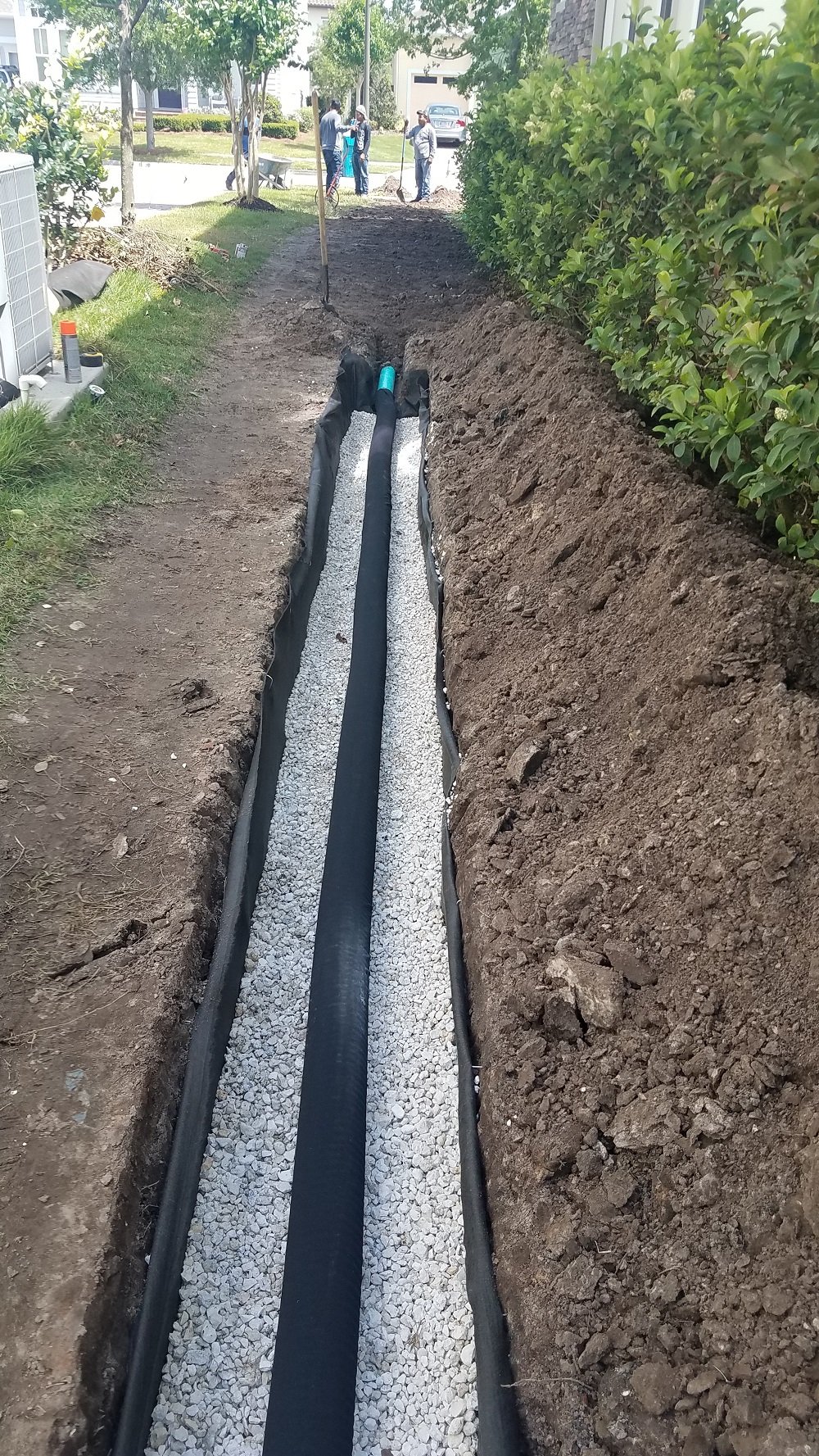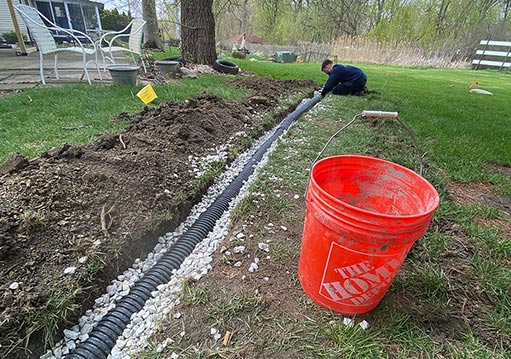Keep Your Basement Dry with a Properly Set Up French Drain System
Understanding the Significance of a Septic Container French Drainpipe for Effective Wastewater Administration
The assimilation of a septic storage tank French drainpipe system plays an essential role in reliable wastewater monitoring, yet its importance is frequently overlooked. Understanding the technicians and benefits of such a system can illuminate its essential function in stopping dirt saturation and enhancing groundwater quality.
What Is a Septic Storage Tank French Drainpipe?
A septic system French drainpipe is a customized water drainage system created to handle wastewater and protect against flooding in areas where conventional water drainage approaches might be poor. This system incorporates the functionalities of a conventional sewage-disposal tank with a French drainpipe, enabling effective wastewater treatment and effective water diversion.

Built using perforated pipes stocked gravel trenches, a French drain promotes the activity of water away from important locations. It permits the infiltration of excess water into the surrounding dirt, promoting reliable drainage while securing the septic tank's integrity. The combination of these two systems is especially helpful in areas with hefty rainfall or bad drain, making certain the longevity and performance of wastewater administration systems while securing public health and the setting.

How It Works in Wastewater Monitoring
In wastewater management, the combination of a septic storage tank and French drain plays an essential function in making certain reliable therapy and disposal of sewage. The septic container offers as the first line of defense, where wastewater undertakes preliminary treatment through sedimentation and anaerobic digestion.
Once the wastewater is clarified, it streams into the French drain system, which is designed to help with more treatment and secure dispersal. The French drain contains perforated pipes hidden in crushed rock or stone, allowing treated effluent to percolate into the surrounding soil. This all-natural purification process aids in the elimination of pathogens and nutrients, advertising groundwater recharge and decreasing the threat of surface contamination.
Together, the sewage-disposal tank and French drainpipe create a sustainable method to wastewater monitoring, decreasing environmental influence while making sure compliance with health policies. This integrated system not just secures public health and wellness yet likewise maintains the stability of regional environments.
Advantages of a French Drainpipe System

The French drain system supplies various advantages that boost both wastewater management and environmental management. Mainly, it effectively redirects water away from critical locations, decreasing the danger of flooding and soil saturation that can endanger septic tanks. This proactive drain option aids preserve the integrity of the septic system by avoiding excess wetness, which can lead to system failing.
Additionally, a properly installed French drain decreases the potential for groundwater contamination. By transporting wastewater far from the property, it decreases the probability of contaminants getting in local water resources, thus safeguarding public health and maintaining environmental equilibrium. The system also boosts the looks and capability of outdoor rooms by protecting against water build-up, which can create unattractive pools or muddy locations.
Additionally, French drains pipes require relatively reduced upkeep contrasted to other drainage services, making them an economical long-term financial informative post investment. Their convenience permits them to be made use of in numerous landscapes, accommodating both household and business buildings. Inevitably, the benefits of a French drain system expand beyond prompt drainage needs, adding to sustainable wastewater monitoring methods and promoting environmental stewardship.
Usual Problems Without a French Drainpipe
Overlooking the installation of a French drainpipe can bring about considerable challenges in handling water flow and keeping dirt honesty. One of the primary issues is the accumulation of excess surface water, which can produce pooling or swamping in backyards, specifically after hefty rainfall. This stagnancy can fill the soil, resulting in disintegration and jeopardizing the structure of nearby structures.
Moreover, without a French drain, groundwater can incorrectly penetrate septic systems, enhancing the danger of system failing. The resulting important site back-up can bring about undesirable odors, carcinogen, and pricey repairs. Poor drainage can likewise advertise the growth of mold and mildew, which can adversely influence indoor air quality and pose health dangers to passengers.
Additionally, the lack of a proper drainage system may motivate the expansion of insects and bugs, attracted to standing water. Vegetation may have a hard time to thrive due to changing dampness degrees, leading to a neglected landscape. Inevitably, the lack of a French drain can cause a series of architectural and environmental problems that require significant treatment and expense to correct. Applying a French drainpipe system is critical for efficient wastewater administration and building protection.
Maintenance Tips for Homeowners
Regular maintenance of a French drainpipe is important to ensure its ideal performance and durability. If sediment is existing, consider using a high-pressure water jet to remove the drain.
In addition, it is critical to maintain the area around the French drainpipe totally free of particles, such as leaves, soil, and other organic matter. This will certainly stop obstructing and allow for efficient water drain. On a regular basis trimming vegetation and growing away from the drain can also alleviate origin breach.
In addition, homeowners need to monitor the efficiency of their French drain after hefty rainfall. Observing exactly how well water is routed far from the septic system can offer insights into its functionality. It might suggest a requirement for professional evaluation. if merging water is noted.
Last but not least, consider organizing periodic expert assessments to review the general condition of the drain. Such proactive steps will certainly assist keep the efficiency of your French drainpipe and guarantee efficient wastewater administration for several years to come.
Conclusion
In final thought, the septic system French drainpipe system plays a crucial duty in effective wastewater monitoring by guaranteeing proper therapy Discover More of sewage and effective water diversion. This incorporated approach not just minimizes flooding and dirt saturation yet likewise improves all-natural filtering procedures and promotes groundwater recharge. Normal upkeep is essential for maintaining its functionality and minimizing air pollution risks. On the whole, the septic system French drainpipe represents a sustainable solution that benefits both residential and industrial buildings throughout different landscapes.
The combination of a septic container French drainpipe system plays a crucial duty in effective wastewater management, yet its value is typically ignored. Ultimately, the benefits of a French drain system extend past instant water drainage needs, adding to sustainable wastewater management practices and advertising ecological stewardship.
In addition, without a French drain, groundwater can incorrectly infiltrate septic systems, enhancing the danger of system failing - French Drain System. Implementing a French drainpipe system is vital for efficient wastewater monitoring and property security
In conclusion, the septic tank French drain system plays a vital function in effective wastewater management by ensuring proper therapy of sewage and efficient water diversion.